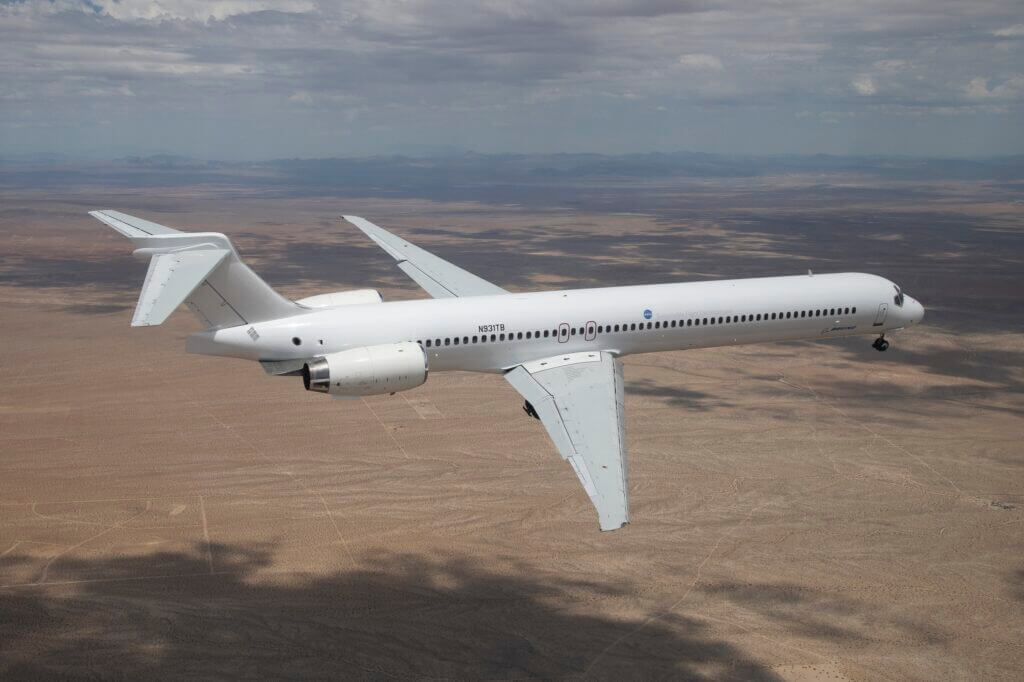Estimated reading time 4 minutes, 35 seconds.
Boeing, in collaboration with NASA, has ferried an MD-90 airplane from Victorville to Palmdale, California, where it will undergo modifications to test the Transonic Truss-Braced Wing (TTBW) configuration as part of the development of the experimental X-66A aircraft.
The X-66A is the focal point of NASA’s Sustainable Flight Demonstrator project, which aims to bring the aviation industry closer to its goal of achieving net-zero emissions by 2050. The idea is to identify and mature “key airframe technologies – such as new wing designs – that have a high probability of transition to the next generation” of commercial narrowbody aircraft, the space agency said.

The TTBW is one of the advanced technologies that will be introduced onto the demonstrator, featuring ultrathin wings reinforced by struts with larger spans and higher-aspect ratios. In addition to the innovative wing design, NASA said additional technologies will be utilized “to help achieve fuel consumption and emissions reductions of up to 30 percent.”
Boeing and NASA have worked together on the TTBW concept for more than a decade through the Subsonic Ultra Green Aircraft Research (SUGAR) program. The pair will continue their partnership to produce the X-66A demonstrator aircraft.
The ferry flight of the MD-90 sustainable flight demonstrator marked a pivotal moment in the development of the experimental X-66A. Boeing celebrated the accomplishment at its Palmdale facility on Aug. 17, with a gathering attended by company executives, NASA representatives, and local community leaders.
“This marks an important step in the Sustainable Flight Demonstrator project, advances Boeing’s commitment to sustainability, and brings us closer to testing and validating the TTBW design,” said Boeing chief technology officer Todd Citron.
The event included the unveiling of photos capturing the MD-90 aircraft’s journey from Victorville to Palmdale, where it will undergo the TTBW modification process.

Congressman Mike Garcia (CA-27) applauded the Boeing-NASA initiative, highlighting the historical significance of Southern California — known as “America’s Aerospace Valley” — as an incubator of aerospace innovation.
“Aerospace Valley has a long and distinguished history as the cradle of aerospace innovation, and this unveiling [of the sustainable flight demonstrator] is a continuation of that critical work,” he said. “Palmdale’s talented workforce and infrastructure make it the perfect location for this important project.”
The modifications to the MD-90 are anticipated to “begin soon,” according to Boeing, while ground and flight testing are slated to begin in 2028.
“Results of the flight tests will help inform industry decisions as to the design of new production single-aisle aircraft for the 2030s,” NASA stated.








